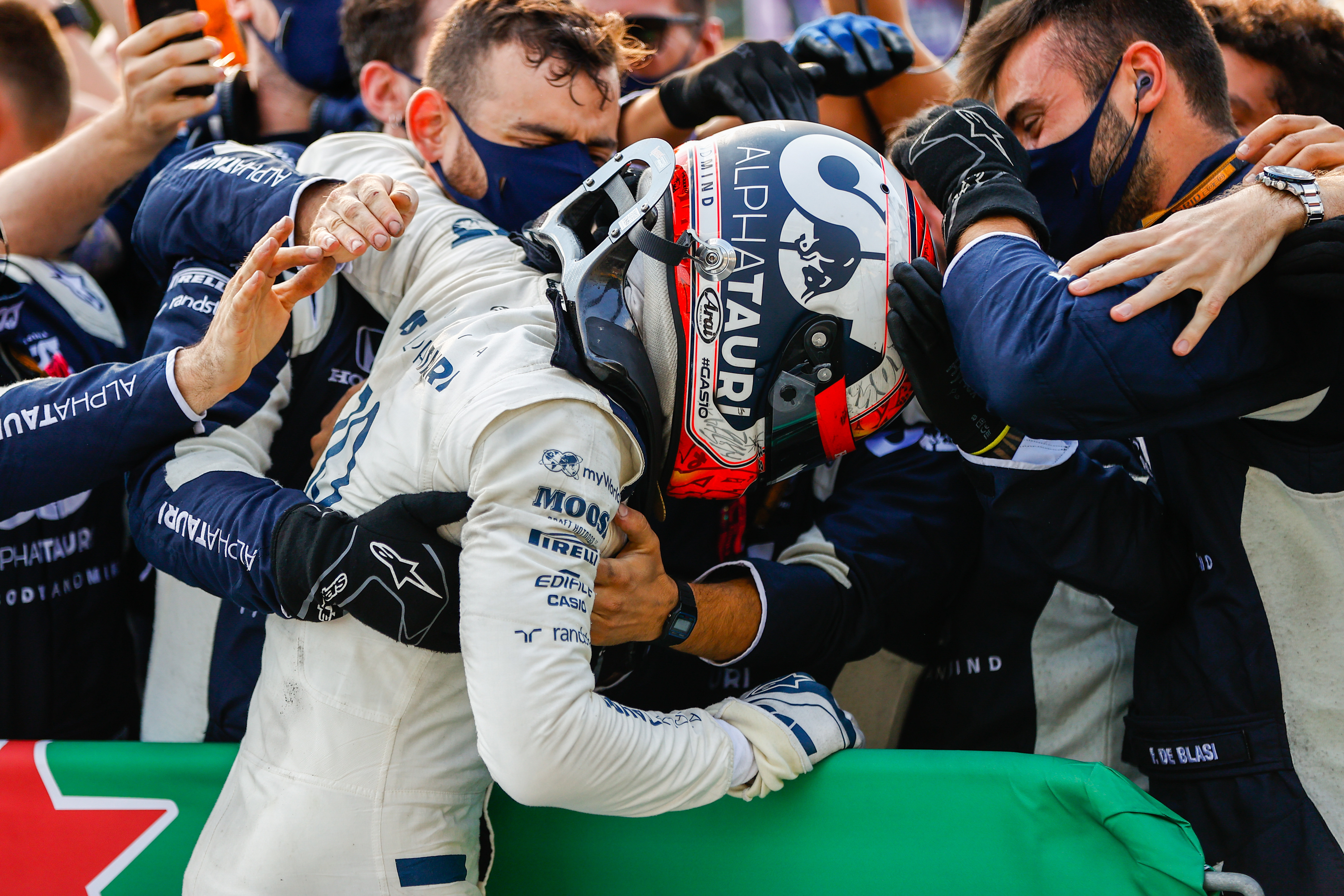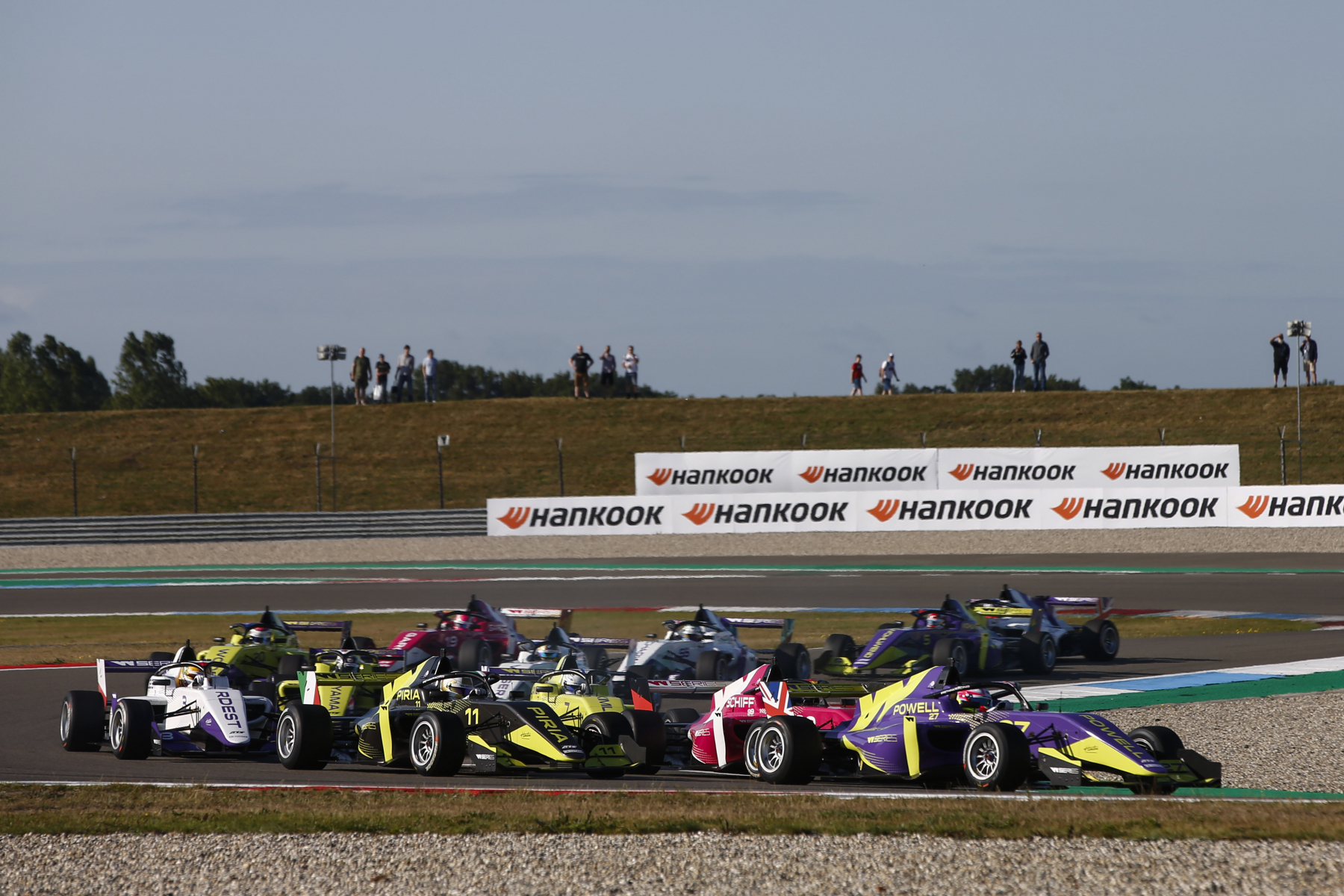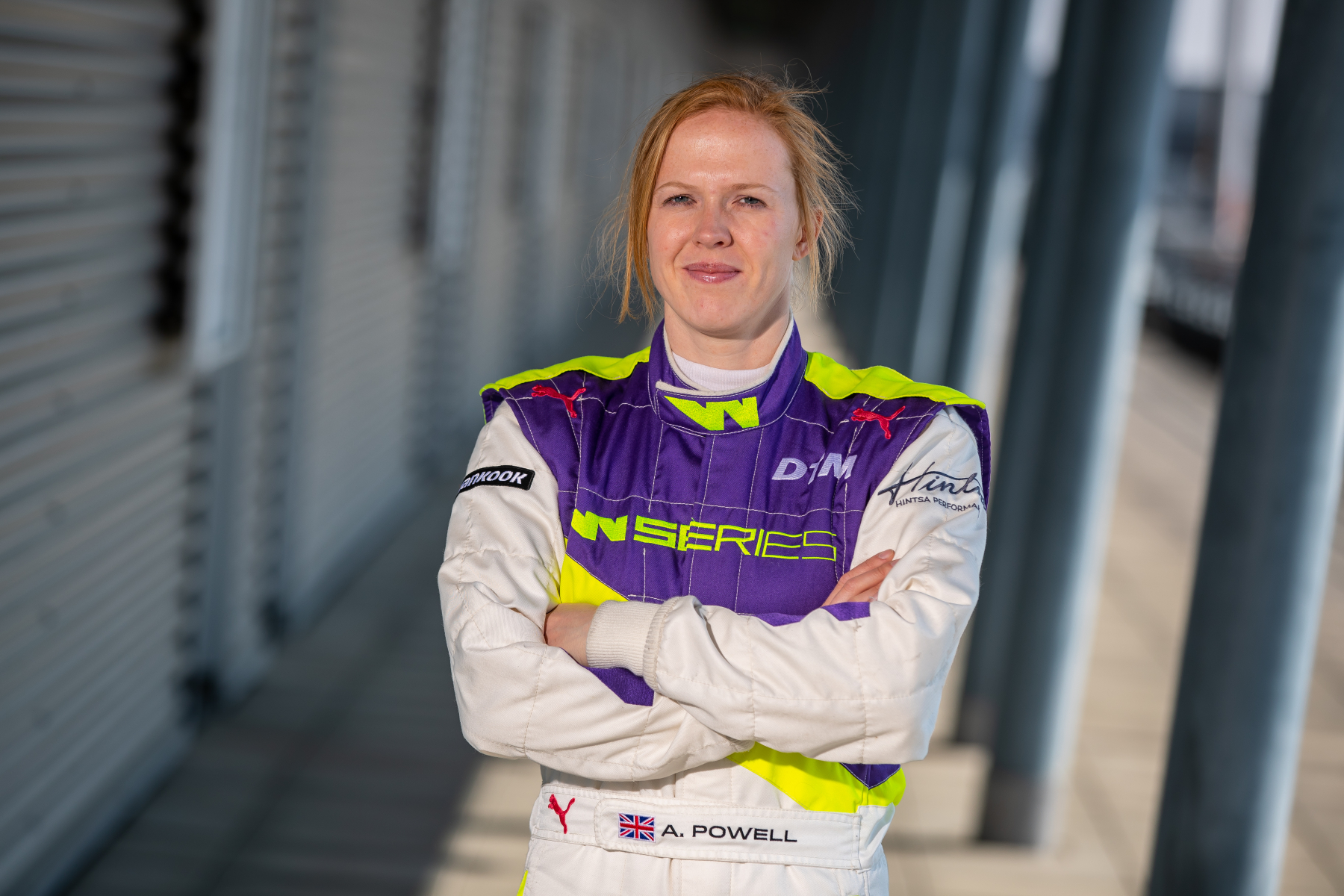W Series drivers will be writing a series of columns for The Race this year, giving their verdicts on what’s going on in Formula 1.
Alice Powell picks up the virtual pen again this week to share her impressions from this Sunday’s rollercoaster race at Monza, and what impact it may have on F1’s view of reverse-grid races.
Sunday’s Italian Grand Prix will live long in the memory, but I wonder if, in years to come, that will be less for Pierre Gasly’s remarkable victory and more as the moment when Formula 1’s reverse-grid debate transformed.
After 15 laps, Lewis Hamilton was leading by the thick end of 10 seconds. He was sat in his Mercedes sure that he was cruising to a 90th Grand Prix win and I was sat at home sure that I was watching the same F1 race I have seen countless times in recent years. But then a freak set of circumstances turned the proceedings on their head.
Hamilton’s penalty for stopping when the pitlane was closed, and the red flag, saved the grand prix. I felt for Hamilton who got caught in the eye of a perfect storm. He was bang to rights, of course, but it was a late call to pit and those information boards can be difficult to decipher so, as a driver, you are largely at the mercy of your team in that instance and Mercedes said communication from the FIA regarding the pitlane closure was somewhat buried on the timing screens. I suspect we will see a tweak to the rules to avoid a repeat.
An easy victory snatched from him, Hamilton deserves immense credit for picking himself up and coming back through the field to finish seventh. It showed great resolve and exposed his team-mate’s deficiencies in the process. With Max Verstappen out of the picture too it was an open goal for Valtteri Bottas, his big chance to stake a claim to be world champion and he missed it, finishing just two places and 10 seconds ahead of Hamilton – whose penalty had cost him half a minute. Unless Bottas was nursing a problem throughout the race, that is a damning result.

Gasly did a fantastic job, having been under increasing pressure for the last few laps as Carlos Sainz closed in and gave it everything. Racing in a tight midfield throughout the season, Gasly is no stranger to a battle for position going right down to the wire. But there is a world of difference between fighting for the final points-paying position and fighting for the race victory. The Frenchman’s heart will have been pounding in the closing stages, but he survived the ultimate test.
At 24, the average age of the three drivers on the Monza podium – Gasly, Sainz and Lance Stroll – was the third-youngest in F1 history. It was a priceless experience in the trio’s career development and that is one of the reasons why I’d be in favour of seeing some reverse-grid racing.
The idea has been put up and shot down a few times in the past with Hamilton among its critics, saying it is an “excuse for not doing a good enough job” by teams further down the pecking order.
I agree with Hamilton. I would much rather see exciting races because the cars are equally matched, and I hope that the reduced budgets and revised regulations give us that. But if they don’t – and I have my doubts – then maybe it’s time to try something else. The bottom line is that I want to see exciting racing and introducing a reverse-grid element to selected race weekends would give us that more often.
A close and competitive grid is imperative for the sport’s long-term health and this was the first race won by a team other than Mercedes, Red Bull or Ferrari since the 2013 Australian Grand Prix. It’s been a long, and often painful, wait.

W Series tested the reverse-grid format in a non-championship race at Assen, Holland, last year and it was one of the most enjoyable races of my career as I started on the penultimate row of the grid and finished second, three-thousandths of a second behind the winner Megan Gilkes.
We lined up in reverse-championship order and it was amazing how my mindset changed in that situation. With my rivals around me on the grid and so many cars between me and the front, I wasn’t particularly worried about managing anything on the car. My sole concern was how to make progress as quickly as possible. The racing throughout the field was close and exciting, and the reaction from fans and commentators was overwhelmingly positive.
Just as Sunday at Monza will have done for Gasly, Gilkes – the youngest driver on the W Series grid last year at 18 – said the experience and the victory at Assen ‘boosted my confidence no end.’
I hope we have more reverse-grid races when W Series resumes its on-track racing programme in 2021. W Series’ aim is to rethink racing and maybe it’s time that F1 did the same.
Alice Powell finished third in the inaugural W Series championship in 2019, winning the final race at Brands Hatch last August. The 27-year-old Briton was the first woman to win a Formula Renault championship and score points in GP3.


